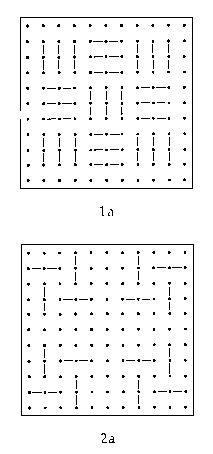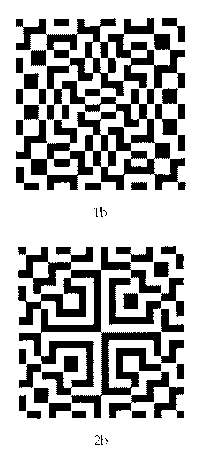

Figure 13.
The symmetrical mirror designs in Figure 13a generate
Lunda-designs with horizontal and vertical reflections
which interchange black and white. (Many) Lunda-designs seem to me -
and to colleagues and students to whom I have shown them -
aesthetically appealing. Where do possible reasons for this lie?
What do all these Lunda-designs have in common? Which characteristics?
Do they possess specific symmetries?